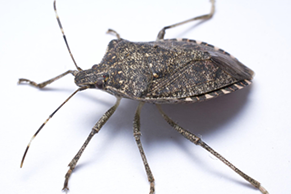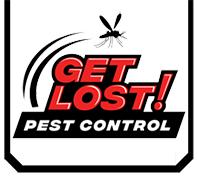 Did you know that a single stink bug infestation can reach up to 26,000 individuals? This startling statistic highlights the ever-growing problem that homeowners across the United States are facing with these pungent pests. Stink bugs have become a widespread nuisance, invading homes and causing significant damage to crops and gardens. This article aims to separate fact from fiction when it comes to these stink bug behaviors, habitats, and effective control strategies, empowering you to take control of your stink bug problem and create a comfortable living environment.
Did you know that a single stink bug infestation can reach up to 26,000 individuals? This startling statistic highlights the ever-growing problem that homeowners across the United States are facing with these pungent pests. Stink bugs have become a widespread nuisance, invading homes and causing significant damage to crops and gardens. This article aims to separate fact from fiction when it comes to these stink bug behaviors, habitats, and effective control strategies, empowering you to take control of your stink bug problem and create a comfortable living environment.
Key Takeaways
- Stink bugs are a rapidly growing problem, with infestations reaching up to 26,000 individuals.
- Understanding the facts about stink bug characteristics, behaviors, and habitats is crucial for effective management.
- Debunking common myths about stink bug control methods is essential for implementing successful prevention strategies.
- Natural repellents and behavior modifications can complement insecticide use for comprehensive stink bug control.
- Seeking professional pest control services may be necessary for severe stink bug infestations.
Understanding Stink Bugs
Stink bugs are a family of insects known as Pentatomidae, with approximately 5,000 species worldwide. They are named for the foul-smelling secretions they produce as a defense mechanism. Stink bugs come in a variety of colors, including brown, green, and metallic, and their oval, broad, and slightly convex shape helps them blend in with their surroundings.
What are Stink Bugs?
Stink bugs are a common nuisance pest that can invade homes and gardens. These insects belong to the Pentatomidae family and are known for their distinct, unpleasant odor when threatened or crushed. Their unique appearance, with a broad, oval shape and varying colors, helps them camouflage effectively in their environments.
Stink Bug Species and Identification
Stink bugs come in a wide range of species, each with its own distinct features. Some of the most common stink bug species include the brown marmorated stink bug, the green stink bug, and the brown stink bug. Identifying the specific species of stink bug can be helpful in determining the best control and management strategies.
Stink Bug Life Cycle and Behaviors
Stink bugs exhibit sexual dimorphism, meaning the male and female can differ in appearance. In cooler climates, adults hibernate during the winter, while in warmer areas they simply become less active. Females lay up to 100 or more ornate, barrel-shaped eggs in clusters or rows, and some species even guard the eggs and newly hatched larvae. Stink bugs can feed on plants, causing discoloration or spotting of the fruit, or they may prey on other insects.
Debunking Stink Bug Myths
There are several common myths surrounding stink bugs that need to be debunked. Contrary to popular belief, citronella candles do not effectively repel stink bugs, as the insects are not deterred by the scent of citronella. Similarly, ultrasonic devices have not been proven to successfully repel stink bugs, as they do not respond significantly to high-frequency sound waves.
Myth: Citronella Candles Repel Stink Bugs
Many homeowners believe that the strong scent of citronella candles can help keep stink bugs at bay. However, research has shown that stink bugs are not deterred by the aroma of citronella, and these candles are not an effective way to control stink bug infestations.
Myth: Ultrasonic Devices Repel Stink Bugs
Another common myth is that ultrasonic devices, which emit high-frequency sound waves, can repel stink bugs. Unfortunately, these devices have not been proven to have a significant impact on stink bug behavior, as the insects do not seem to be sensitive to these sound waves.
Myth: Stink Bugs Bite or Sting Humans
Contrary to popular belief, stink bugs do not pose a direct threat to humans. They are primarily nuisance pests that release an unpleasant odor when threatened or crushed, but they do not bite or sting people.
Myth: Bug Zappers Control Stink Bugs
Bug zappers, which use UV light to attract and eliminate various insects, are often thought to be an effective way to control stink bug populations. However, stink bugs are not attracted to the light emitted by these devices, making them an ineffective solution for managing stink bug infestations.
Stink Bugs – Facts and Prevention
While natural repellents, such as essential oils and certain plants, can help deter stink bugs, they may not be sufficient to completely eliminate severe infestations. Combining natural stink bug repellents with other control methods is recommended for optimal results.
Natural Repellents for Stink Bug Control
Essential oils like peppermint, lemongrass, and eucalyptus can act as natural stink bug repellents when applied around entry points or areas where the pests are observed. Planting herbs like basil, thyme, and marigolds can also help deter stink bugs from your outdoor spaces. However, these natural solutions may only provide temporary relief and may need to be reapplied regularly for effective stink bug control.
Behavior Modifications to Deter Stink Bugs
Modifying stink bug behaviors can also be an effective stink bug prevention strategy. Stink bugs are attracted to light, warmth, and vegetation, so reducing outdoor lighting, sealing entry points, and maintaining a tidy yard can make your home less appealing to these pests. Understanding and exploiting stink bug behaviors is key to successful stink bug prevention and control.
Effective Stink Bug Control Strategies
Insecticides can be a highly effective tool in controlling stink bug infestations, especially when dealing with larger populations. Insecticides containing pyrethroids or neonicotinoids are commonly used for stink bug management and should be applied to areas where the insects congregate, such as cracks, crevices, and exterior walls. It is important to follow all manufacturer instructions and safety precautions when using insecticides.
Role of Insecticides in Stink Bug Management
Stink bug control strategies often rely on the strategic use of insecticides to eliminate large infestations. Products containing pyrethroids or neonicotinoids are particularly effective in targeting and eliminating these pests. When applying insecticides, it is crucial to focus on the areas where stink bugs are known to congregate, such as cracks, crevices, and the exterior walls of the home. Proper application and adherence to all safety guidelines are essential for the safe and effective use of these chemicals.
Professional Pest Control Services
For the most effective and safe stink bug control, it is recommended to seek the services of professional pest control experts. These specialists have the knowledge, experience, and specialized equipment to identify the root cause of the infestation and implement a comprehensive solution to eliminate stink bugs long-term. By partnering with a professional pest control service, homeowners can ensure that the stink bug problem is addressed thoroughly and efficiently, providing a lasting solution to this persistent pest.
Stink Bugs in Idaho
While stink bugs are a widespread problem across the United States, they can also be a significant issue for homeowners and farmers in Idaho. Certain areas of the state may be considered “hotspots” for stink bug infestations, due to factors such as the presence of favorable habitats and the prevalence of specific stink bug species.
Stink Bug Habitats and Hotspots in Idaho
Some of the regions in Idaho that are known to have higher concentrations of stink bug populations include the Treasure Valley, the Magic Valley, and the Palouse. These areas offer the ideal combination of climate, vegetation, and agricultural activities that support the thriving growth of stink bug colonies.
Localized Stink Bug Species in Idaho
Some of the stink bug species commonly found in Idaho include the green stink bug (Chinavia hilaris) and the southern green stink bug (Nezara viridula). These insects can cause damage to a variety of crops, including soybeans, tomatoes, tobacco, and peaches, making them a concern for agricultural communities in the state.
Conclusion
Stink bugs can be a frustrating and persistent pest, but by understanding the facts about these insects and implementing effective control and prevention strategies, homeowners can successfully manage infestations and maintain a comfortable living environment. This article has provided a comprehensive overview of stink bug characteristics, debunked common myths, and outlined various control methods, including the use of natural repellents, behavior modifications, and professional pest control services.
By staying informed and proactive, homeowners can effectively address stink bug problems and enjoy a stink-free home. Remember, a combination of strategies tailored to your specific situation is often the key to long-term stink bug control.
Ultimately, understanding the truth about stink bugs and taking the necessary steps to prevent and control them can help create a more comfortable and inviting living space for homeowners and their families.


